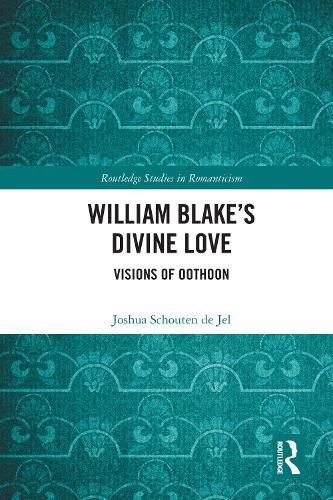Readings Newsletter
Become a Readings Member to make your shopping experience even easier.
Sign in or sign up for free!
You’re not far away from qualifying for FREE standard shipping within Australia
You’ve qualified for FREE standard shipping within Australia
The cart is loading…






Despite the fact that William Blake summarises the plot of Visions of the Daughters of Albion (1793) in just eight lines in the prefatory 'Argument,' there are several contentious moments in the poem which continue to cause debate. Critics read Oothoon's call to Theotormon's eagles and her offer to catch girls of silver and gold as either evidence of her rape-damaged psyche or confirmation of her selfless love which transcends her socio-sexual state. How do we reconcile the attack of Theotormon's eagles and the wanton play of the girls with Oothoon's articulate and highly sophisticated expressions of spiritual truth and free love?
In William Blake's Divine Love: Visions of Oothoon, Joshua Schouten de Jel explores the hermeneutical possibilities of Oothoon's self-annihilation and the epistemological potential of her visual copulation by establishing an artistic and hagiographical heritage which informs the pictorial representation and poetic pronunciation of Oothoon's enlightened entelechy. Working with Michelangelo's The Punishment of Tityus (1532) and Gian Lorenzo Bernini's Ecstasy of Saint Teresa (1647-51), Oothoon's ecstatic figuration reflects two iconographic traditions which, framed by the linguistic tropes of divine love expressed within a female-centred mystagogy, reveal the soteriological significance of Oothoon's willing self-sacrifice.
$9.00 standard shipping within Australia
FREE standard shipping within Australia for orders over $100.00
Express & International shipping calculated at checkout
Despite the fact that William Blake summarises the plot of Visions of the Daughters of Albion (1793) in just eight lines in the prefatory 'Argument,' there are several contentious moments in the poem which continue to cause debate. Critics read Oothoon's call to Theotormon's eagles and her offer to catch girls of silver and gold as either evidence of her rape-damaged psyche or confirmation of her selfless love which transcends her socio-sexual state. How do we reconcile the attack of Theotormon's eagles and the wanton play of the girls with Oothoon's articulate and highly sophisticated expressions of spiritual truth and free love?
In William Blake's Divine Love: Visions of Oothoon, Joshua Schouten de Jel explores the hermeneutical possibilities of Oothoon's self-annihilation and the epistemological potential of her visual copulation by establishing an artistic and hagiographical heritage which informs the pictorial representation and poetic pronunciation of Oothoon's enlightened entelechy. Working with Michelangelo's The Punishment of Tityus (1532) and Gian Lorenzo Bernini's Ecstasy of Saint Teresa (1647-51), Oothoon's ecstatic figuration reflects two iconographic traditions which, framed by the linguistic tropes of divine love expressed within a female-centred mystagogy, reveal the soteriological significance of Oothoon's willing self-sacrifice.